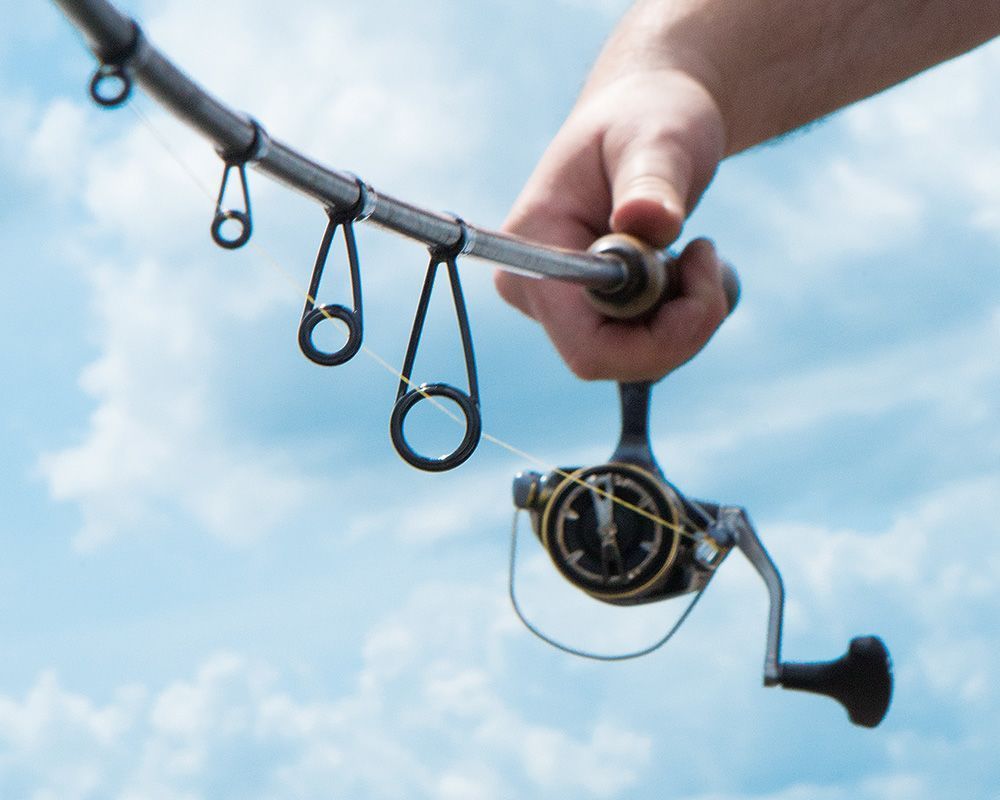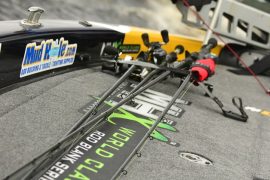
Rod guides and rod-guide inserts are vital components of your fishing rods. Major upgrades over the past decade increased performance via better sensitivity, better heat dissipation and lighter materials. Custom-rod builders are up-to-date with the latest trends, staying knowledgeable when buying new components. But for the rest of us, we likely need a refresher. Not because we plan on building a bunch of rods next month, but because we should understand the features, designs and parts of the rods we’re buying.
Current rod-building trends lean toward increasing guide-insert hardness to decrease friction for longer casts, and toward saving weight by lightening components, says Chris Adams, marketing and accounts manager with Mud Hole Custom Tackle in Oviedo, Florida.
“For an inexpensive rod, a stainless-steel guide frame with an aluminum-oxide insert is common,” says Adams. “Aluminum oxide has been around for 30 years, and it’s still used just about everywhere because of [the low] cost.” This ceramic ring is fine for braided lines, but the gauge of ring is thick and its weight heavy.
For the best performance relative to price, look to guides featuring CRB Elite, Fuji alconite or American Tackle Nanolite ceramic ring options, says Adams. Available for offshore rods, fly rods and everything in between, these lightweight eyes can take a beating just like aluminum oxide.
“I’d consider these guides the best bang for your buck,” says Adams. “Not too expensive, but still offer a significant performance advantage and are lighter than aluminum oxide by fractions of grams.”

Typically, the guide frames for both aluminum oxide and other premium ceramic rings are built from stainless steel, although corrosion-free titanium is available with more premium inserts. Titanium is lighter and more rigid than stainless steel, making for a more sensitive rod feel. For anglers fishing in salt water, titanium is impervious to corrosion.
“Stainless steel is a softer metal that’s more forgiving, allowing an angler to bend the guide back in place as necessary,” says Adams. “If you treat your rod rough, titanium guide frames will likely [break] quicker.”
Titanium tip tops and guides often come available with inserts made from silicon carbide (SiC) and Fuji Torzite. A SiC and/or Nanolite insert is a thinner, lighter and harder material than alconite or aluminum oxide, used to better dissipate line heat, prevent wear and line grooves in the insert, and increase the rod’s sensitivity.
Fuji’s Torzite might be the ultimate insert with the highest price point. A Fuji K-series double-foot spinning guide in ring size 10 is $20; a stainless-steel alconite version is just $4. Fuji says the material is smoother and tougher than SiC, with better fracture resistance, higher polish and comparable strength in a narrower ring that’s 30 percent lighter.
Companies such as American Tackle, Fuji, Pacific Bay and relative newcomer CRB produce a full range of components to suit style, performance and budget. A little research into guide frames and inserts on your next rod purchase can go a long way in understanding how the components will affect fishing performance and feel.






